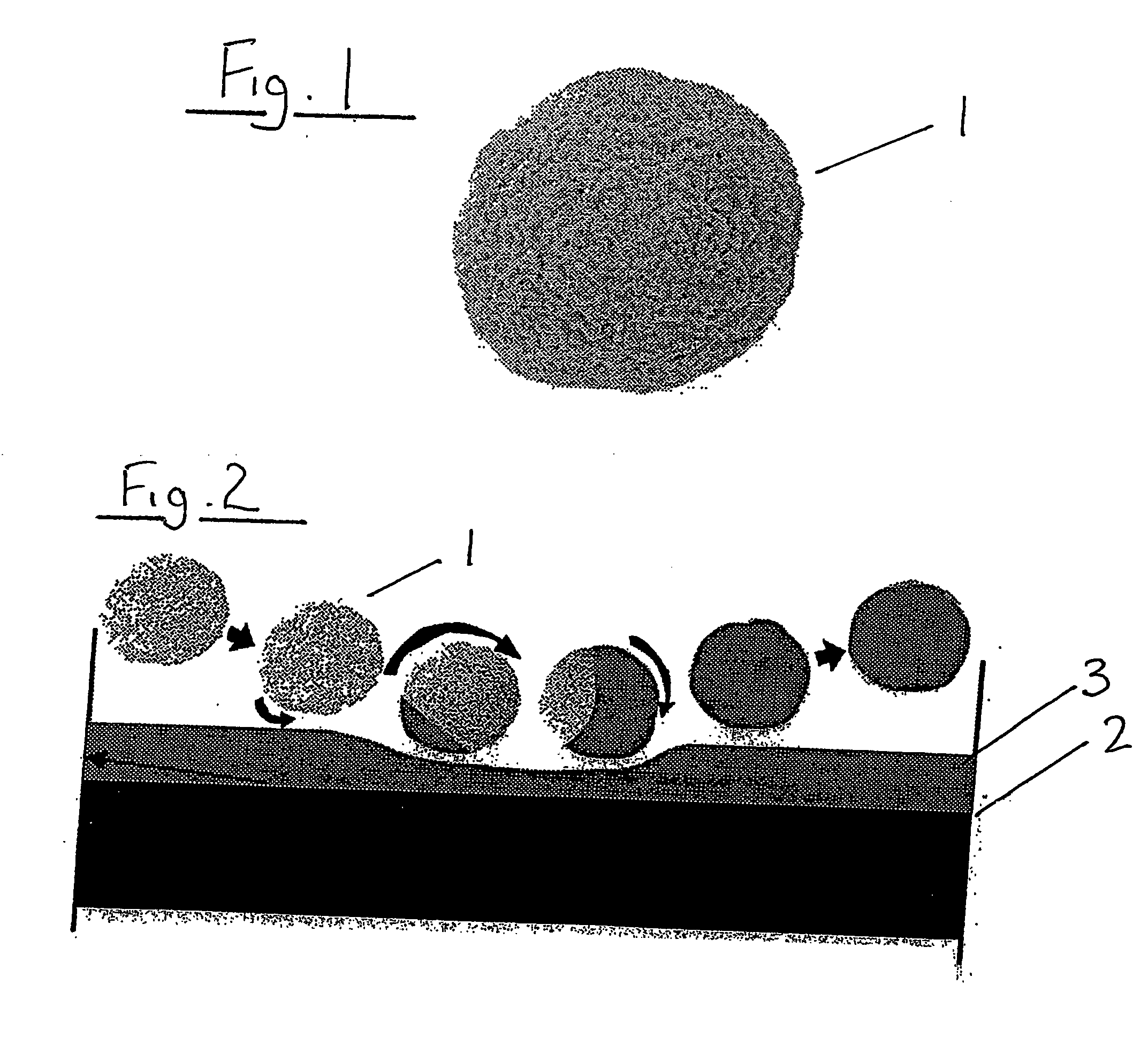Process for treating a surface
a surface treatment and surface technology, applied in dental tools, medical science, dentistry, etc., can solve the problems of affecting the cleaning effect of the surface,
- Summary
- Abstract
- Description
- Claims
- Application Information
AI Technical Summary
Benefits of technology
Problems solved by technology
Method used
Image
Examples
example 1
[0036] Method of production of particles.
[0037] Production of insoluble particles CaCO3 is carried out by providing free Ca++ in a liquid with a PH over 7 by dissolving calcium oxide in water.
[0038] Addition of CO2 results in the precipitation CaCO3.
Ca+++2OH−+CO2→CaCO3+H2O
[0039] Various other methods of production of particles forming part of treating agents according to the invention have been investigated using various types of substrates including plastic, metal and polymer. Examples of these methods include:
Chemical
[0040] There are numerous chemical methods for producing spherical powders. Generally, chemical methods result in very fine powder particle sizes. Such methods include Sol Gel, chemical precipitation, Reaction, reduction (hydrogen in an autoclave to reduce metal salts to the metal), decomposition (eg metal carbonyls) and Electrolysis.
[0041] This is the most widely used industrial process involving particle formation and drying. It is highly suite...
PUM
| Property | Measurement | Unit |
|---|---|---|
| diameter | aaaaa | aaaaa |
| diameter | aaaaa | aaaaa |
| angle of incidence | aaaaa | aaaaa |
Abstract
Description
Claims
Application Information
 Login to View More
Login to View More - R&D
- Intellectual Property
- Life Sciences
- Materials
- Tech Scout
- Unparalleled Data Quality
- Higher Quality Content
- 60% Fewer Hallucinations
Browse by: Latest US Patents, China's latest patents, Technical Efficacy Thesaurus, Application Domain, Technology Topic, Popular Technical Reports.
© 2025 PatSnap. All rights reserved.Legal|Privacy policy|Modern Slavery Act Transparency Statement|Sitemap|About US| Contact US: help@patsnap.com

